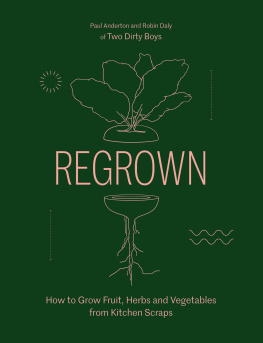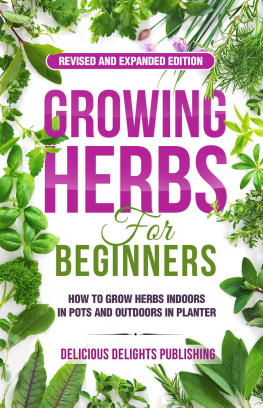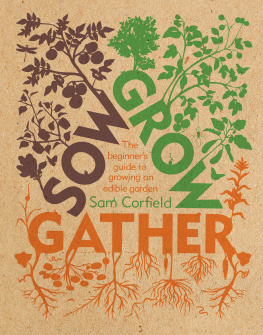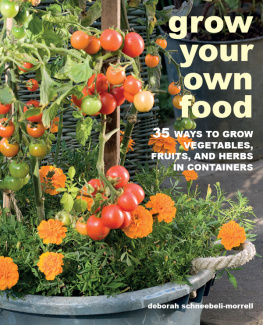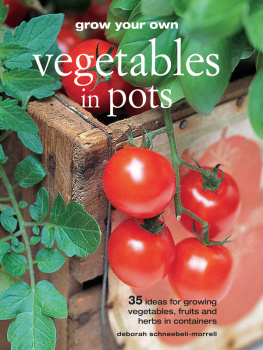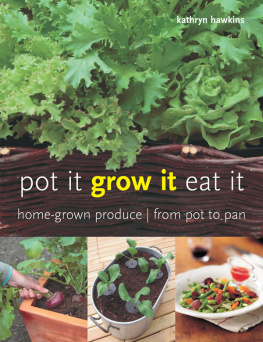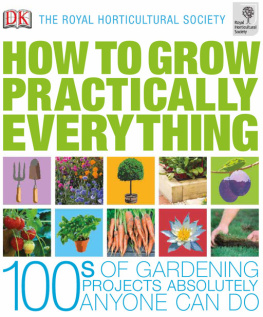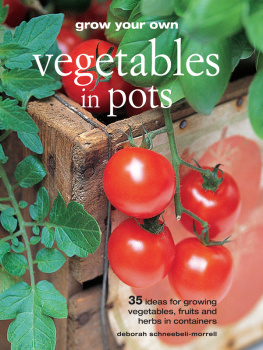Copyright
First published in Great Britain in 2008 by W. Foulsham & Co. Ltd
Copyright 2008 Mortons Media Group Ltd
Cover photograph James Murphy
A CIP record for this book is available from the British Library
The moral right of the authors has been asserted
All rights reserved
Epub ISBN 9780572040369
Kindle ISBN 9780572040352
Print ISBN 9780572034948
The Copyright Act prohibits (subject to certain very limited exceptions) the making of copies of any copyright work or of a substantial part of such a work, including the making of copies by photocopying or similar process. Written permission to make a copy or copies must therefore normally be obtained from the publisher in advance. It is advisable also to consult the publisher if in any doubt as to the legality of any copyright which is to be undertaken.
W. Foulsham & Co. Ltd
Capital Point, 33 Bath Road
Slough, Berkshire
SL1 3UF, England
www.foulsham.com
Introduction
The easy-to-follow A-to-Z format of this practical guide takes you through the crops commonly grown in the UK and explains the essential tasks you will need for success both in the garden and in the kitchen.
Everyone loves to eat healthy food, and more and more people are discovering the benefits of growing their own fresh produce. No wonder home-grown produce has so many advantages over shop-bought food: it tastes better, is guaranteed free from harmful pesticides and, since it hasnt travelled half way around the world to reach your plate, is environmentally friendly, too. Its also fun, great exercise and can bring the family together.
Gone are the days when owning an allotment was seen as the preserve of men. More women than ever before are taking up their trowels indeed it is common to see whole families enjoying life on the allotment with many sites having long waiting lists for vacant plots.
Some would-be growers are put off by believing that growing your own takes lots of knowledge or a great deal of space. This is a shame since it is so easy and satisfying to do and can be done on the smallest plot.
A complete guide to growing and cooking your own fruit and veg, this superb practical guide shows just how easy it can be by providing you with all the information you need whether you are a beginner or experienced grower. The A-to-Z format is easy to follow and looks at the most popular crops, explaining all the essential tasks you will need for a bumper harvest, whether you have an allotment, a vegetable plot in the garden, or simply a few tubs or a growbag on the patio or a balcony.
This guide takes the muck and mystery out of growing vegetables, fruit and herbs by showing exactly when and how to sow, how to tend, and how to harvest, prepare and store the most popular varieties. It will give beginners the confidence they need to grow their own five-aday for their families. And, of course, there is a mouthwatering, easy-to-follow recipe or meal idea for every fruit and vegetable to inspire you, no matter how basic your cooking skills.
Preparing to grow
You dont need an allotment or a big garden to grow vegetables or fruit. Large pots or growbags will do. If you have a tiny garden, then devote a sunny part of it to growing a few vegetables. It can be as small as a square metre! If you dont have space, just grow some attractive and tasty vegetables in the flower border, or plant some vegetables in containers on the patio.
If you want to mix in a few vegetables with your flowers, you could sow a line of mixed salad leaves at the front of a border: not only will they spice up your salads but they will look attractive, too. You could try training some runner beans, or an apple, plum or pear tree, up a sunny wall or fence. For the tiniest spaces, plant a tumbler-type cherry tomato in a hanging basket, along with a couple of bedding plants. Strawberries are also ideal for a hanging basket or a large tub. Youll find many more ideas for small spaces in this book.
BADLY NEGLECTED PLOT
If you are lucky enough to acquire an allotment, the plot will probably be covered in weeds, or even woody brambles if it has been badly neglected.
You dont need to cultivate it all in the first year. Take your time and concentrate on a small area first so it doesnt become overwhelming or risk damaging your back! Sow and tend this area well and by the end of your first growing season you will still have a few crops. Meanwhile, you can deal with the rest of the plot to prepare it and make it easier to clear when you do start to work on it. You can start to dig that over in the autumn and begin to sow from the following spring.
If you cover the weeds with some black permeable membrane, which is sold by the metre at garden centres, you can leave the remaining plot untended for up to a year. Spread the membrane over the ground, making sure it is fixed well at the edges by digging them into the soil or placing bricks around all sides. This will smother the weeds and make the clearing process much easier.
Brambles and saplings need to be cut down with shears or a strimmer. If the plot is large, use a strimmer first to cut all the top growth back to ground level, then dig this area over well, removing as many of the roots as you can.
If you want to use all the ground for growing as quickly as possible, then either dig over the whole area, removing all the weed growth, or to make the job easier, apply the systemic weedkiller glyphosate. The chemicals travel right through the plant and kill the roots. It will take several weeks to have an effect but suddenly the weeds will turn yellow and die. At this stage you can rake off the dead material and dig over the plot.
NEW PLOT FROM A LAWN
In order to turn a piece of lawn into a vegetable plot, you have two choices:
Remove the turf: If you have a good, deep soil, then removing the turf is a good option as you will get very little regrowth of grass. For large areas, you can hire equipment to strip off the turf. For small areas, it is easy to do by hand by pushing a spade under the turf about 5cm/2in below the surface. It can literally be lifted up in long strips. And the discarded turf need not be wasted: just stack it up in a big pile grass-side down. This will ensure the grass does not grow but in a few months you will have a beautiful stack of good quality soil that can be put back on your vegetable plot.
The soil should be dug over at least a spades depth but preferably a bit deeper to loosen up the compacted layers. With soil that is very heavy clay or very sandy, it would be beneficial to incorporate plenty of farmyard manure or garden compost before sowing or planting.
Spray the grass with weedkiller: This is the easier option and particularly good if you have poor or thin soil. The first 2.5cm/1in below the surface of grass is usually good quality, so ideally you want to keep it; stripping off the turf will remove some of it.
Many weedkillers can be used, but if you spray with glyphosate, this will get right to the grass roots and kill any perennial weeds in the turf. It is best applied on a bright, but not hot, day and, although it takes two to three weeks to show results, you only have to wait a day or two after spraying before digging in the turf.
This can be a tricky job, as the grass may be quite compacted and it is hard to break up the clods of grass and roots. It is best to dig a 30cm/12in deep trench first, and then turn the turf back into this. The aim is to bury the grass clumps so that you have an easier soil surface to cultivate. Sowing can begin as long as there is no regrowth. Should the grass start to come through, it will require another spray before planting.
THE BEST TIME TO START
Sowing vegetables: Between March and September


